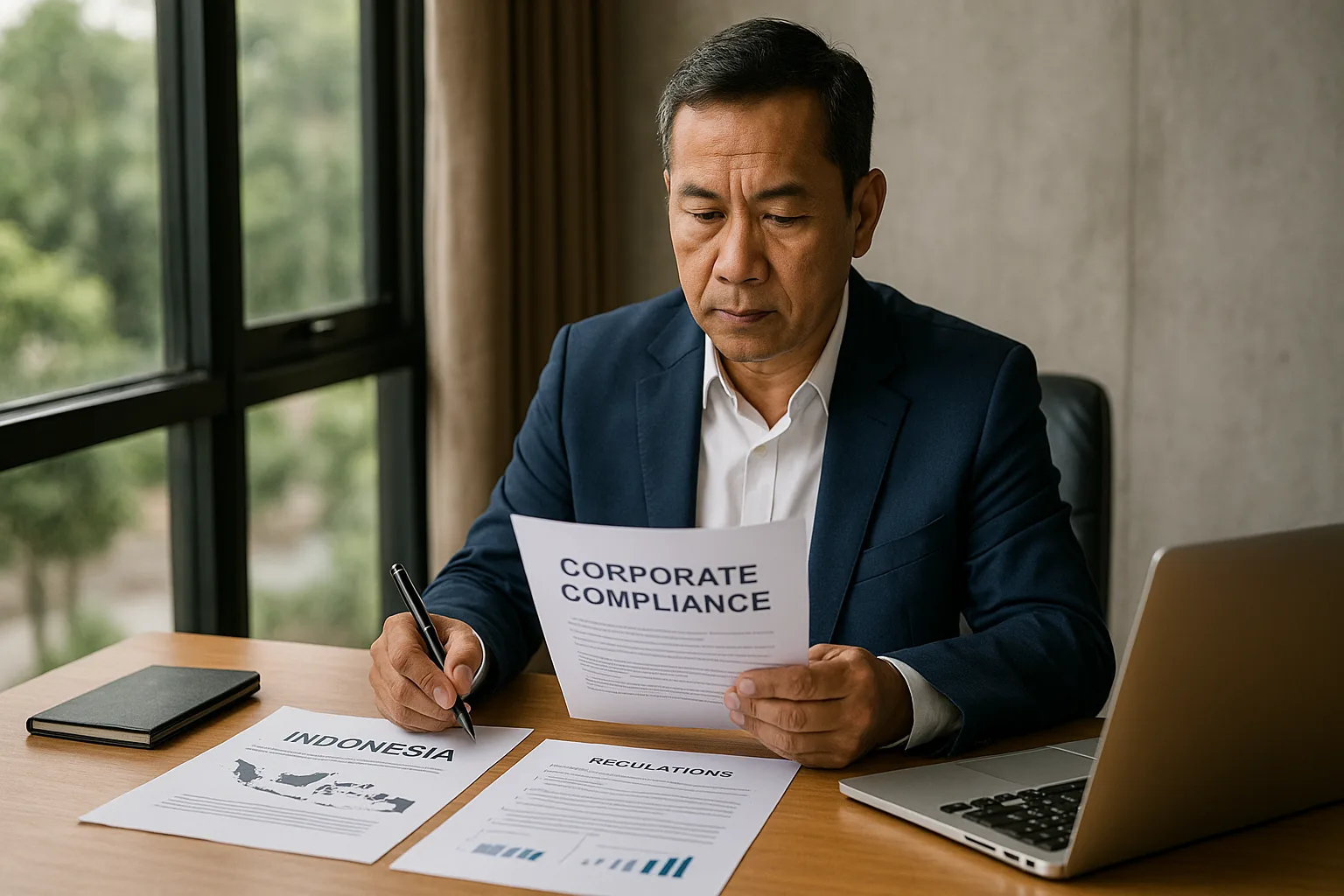For more than a decade, foreign investors entering Indonesia have been guided—sometimes even pressured—into believing that forming a PT PMA requires IDR 10 billion in paid-up capital. This figure became so common that many foreigners assumed it was a fixed, universal rule. Yet in 2025, Indonesia introduced a regulatory shift that finally clarifies a long-standing misconception: you do not always need IDR 10 billion to establish a PT PMA.
Under BKPM Regulation No. 5 of 2025 (Permen BKPM 5/2025), the minimum paid-up capital requirement for a PT PMA was officially lowered to IDR 2.5 billion. Multiple legal and investment guides confirm this, noting that foreign companies must now inject a minimum of IDR 2.5 billion as actual paid-up capital.
However, the story does not end there. Even though the required paid-up capital is only IDR 2.5 billion, the total investment value requirement—often misunderstood as “capital”—still commonly exceeds IDR 10 billion per KBLI, depending on the classification of the business. This distinction is where most confusion comes from, and it continues to cause errors in new company setups.
This article will break it all down in a clear, human-friendly way:
- Why the 10-billion capital myth existed
- What changed under the 2025 regulations
- Why IDR 2.5 billion is now sufficient in most sectors
- How OSS RBA evaluates capital differently
- What foreign investors must still comply with
And most importantly: how to choose the right capital structure for your PT PMA in 2025.
Why Did Everyone Believe PT PMA Required IDR 10 Billion?
To understand why this topic keeps resurfacing, we need to look at the past. For years, the Indonesian investment ecosystem circulated a consistent guideline: a PT PMA must have a minimum issued and paid-up capital of IDR 10 billion. References to this number appear in older BKPM guidance and investment booklets. One example is the “Indonesia Investment Guidebook” (2022), which clearly states a minimum paid-up capital requirement of IDR 10 billion for foreign investment companies.
This number became entrenched for three reasons:
- BKPM’s historical categorization of PT PMA as “large enterprises.”
A company was considered a large enterprise if it had > IDR 10 billion in capitalization or investment. - Consultants reused the same interpretation for years.
Many agencies simply repeated “PT PMA = 10B capital” without distinguishing between paid-up capital and planned investment value. - Investors misunderstood the difference between capital & investment value.
The old OSS (pre-RBA) system did not clearly separate these terms, making them appear interchangeable.
As a result, the “IDR 10 billion capital requirement” became a myth that was treated like law, even though it was always more nuanced.
What Actually Changed in 2025 Under BKPM Regulation No. 5/2025
The 2025 reform changed the investment landscape significantly. According to summarized analyses of BKPM Regulation 5/2025, the updated requirement is:
- Minimum paid-up capital (modal disetor): IDR 2.5 billion
- Funds must be deposited into the company bank account
- Funds must remain for 12 months unless legitimately used
This means the old assumption—that all PT PMAs must inject IDR 10 billion upfront—no longer reflects current regulations.
Paid-Up Capital vs. Investment Value (Nilai Investasi)
One of the most important changes is the clearer distinction between:
- Paid-up capital → Money that shareholders actually inject into the company
- Investment value → Total project/operational investment (e.g., equipment, manpower, operational budget, development costs)
Under the updated guidelines:
- Paid-up capital is officially IDR 2.5 billion, regardless of sector (except special industries)
- Investment value for many KBLI still must exceed IDR 10 billion, excluding land and buildings
Legal and investment commentaries confirm this distinction, noting that while the capital injection requirement is reduced, the total investment plan remains a key threshold.
This is the source of ongoing confusion: the 10 billion number did not disappear—it simply applies to investment value, not paid-up capital.
Why OSS RBA Often Accepts IDR 2.5 Billion as the Realistic Capital Level
The shift toward OSS RBA (Risk-Based Approach) has also transformed how Indonesia evaluates companies.
Instead of applying a blanket capital rule, OSS RBA:
- Analyzes company scale
- Evaluates business classification (KBLI)
- Assesses risk category
- Determines capital requirements based on the nature of the business
Under this more rationalized system, many foreign-owned service businesses—consulting, digital, tech, trading—are categorized in ways that make IDR 2.5 billion sufficient as paid-up capital during establishment.
This is why many PT PMAs successfully incorporate with:
- Authorized capital: flexible (often 10–25 billion)
- Paid-up capital: 2.5 billion
- Investment plan: > 10 billion (depending on KBLI)
This is consistent with multiple sources stating that the goal of the reform was to lower barriers to foreign investment and to provide realistic starting conditions.
Does Every PT PMA Only Need IDR 2.5 Billion Now?
Not exactly.
When IDR 2.5 Billion Is Enough
- Service-based businesses
- Management consulting
- Trading (import/export)
- Digital/IT businesses
- Marketing, advertising, creative industries
These companies typically face lower industry-specific financial thresholds.
When You Might Still Need More Than IDR 2.5 Billion
Some industries still require higher capital or investment due to regulations:
- Manufacturing
- Energy
- Natural resources
- Large-scale logistics
- Financial services
- Construction/engineering (certain segments)
Sector-specific regulations can override the general rule, so foreign investors must ensure their business classification is correct.
The Practical Meaning of Capital for Foreign Investors in 2025
Capital isn’t just a regulatory obligation—it determines how your business operates.
Why Paid-Up Capital Matters
- It reflects the company’s financial stability
- It is used to fund operations
- It affects investor credibility
- It shows commitment to the business plan
Why Investment Value Matters
- Needed for business licensing
- Influences OSS RBA risk classification
- Determines what licenses you can obtain
- Impacts LKPM (investment reporting)
While paid-up capital is lower now, investors must ensure their investment plan remains realistic, credible, and justifiable.
Common Mistakes Foreign Investors Still Make
Even under the new regulation, foreigners often fall into the same traps:
Declaring Incorrect Capital Structure
Some still declare “10 billion capital” but fail to deposit it. Under OSS RBA, this mismatch can delay approvals.
Misunderstanding “authorized capital”
Authorized capital is not required to be fully paid-up. Many set high authorized capital but don’t distinguish it from the actual paid-up amount.
Choosing the Wrong KBLI
Some consultants assign KBLI codes that impose higher thresholds just to simplify paperwork, without explaining the impact.
Not Preparing for 12-Month Retention
Paid-up capital cannot be withdrawn immediately; it has a retention requirement for compliance.
FAQ — Capital Requirements for PT PMA in 2025
1. Is paid-up capital now officially IDR 2.5 billion?
Yes. Multiple regulatory summaries confirm this as the new standard under BKPM Regulation No. 5 of 2025.
2. Do I still need IDR 10 billion?
Not as paid-up capital, but your investment value may still exceed IDR 10 billion depending on your KBLI.
3. Can I declare IDR 2.5 billion but invest more later?
Yes. You can increase capital through shareholder resolutions.
4. What happens if I don’t deposit the paid-up capital?
Your licensing can be delayed or rejected, and non-compliance may impact future approvals.
5. Is this capital requirement the same for all industries?
No. Some sectors have stricter rules and may still require higher paid-up capital.
Conclusion — So Which One Is the Real Requirement in 2025?
The simplest way to summarize Indonesia’s PT PMA capital rules in 2025 is this:
- Paid-Up Capital: IDR 2.5 billion (confirmed under BKPM 5/2025)
- Investment Value: Often still > IDR 10 billion depending on KBLI
- Myth: “PT PMA needs IDR 10 billion capital”
- Reality: You only need IDR 2.5 billion injected as capital, but you must plan an investment scale that aligns with regulations.
The key is understanding how capital, investment value, KBLI, and OSS RBA work together.
Foreign investors who understand this distinction can structure their company more efficiently, avoid regulatory pitfalls, and start operating faster with a realistic financial plan.
Need Help Setting Up Your PT PMA Correctly?
CPT Corporate specializes in PT PMA establishment, capital structuring, OSS RBA licensing, and compliance.
If you want to ensure your company is registered correctly under the new 2025 rules—without unnecessary capital burden or avoidable mistakes—our team can guide you through:
- KBLI selection
- Capital & investment structuring
- OSS RBA processing
- BKPM compliance
- Investment reporting (LKPM)
Contact CPT Corporate today for a consultation and set up your PT PMA the right way, without overpaying or risking compliance issues.




